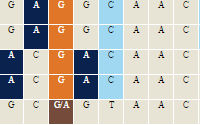Gene Ontology Annotations Click to see Annotation Detail View
Biological Process Object Symbol | Species | Term | Qualifier | Evidence | With | Notes | Source | Original Reference(s) | Bdkrb2 | Rat | positive regulation of cytosolic calcium ion concentration | | IMP | | | RGD | | Bdkrb1 | Rat | positive regulation of release of sequestered calcium ion into cytosol | | IDA | | in urinary bladder urothelium | RGD | | | |||||||||||||||||||||||||||||||||||||||||||||||||||||||
|
|




















